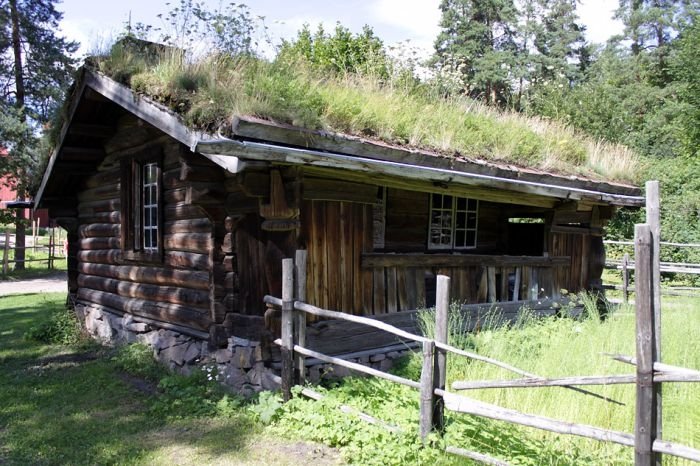|
|
Sod Roofs, Norway
|
The term ‘sod roof’ is somewhat misleading, as the active, water-tight element of the roof is birch bark. The main purpose of the sod is to hold the birch bark in place. The roof might just as well have been called a "birch bark roof", but its grassy outward appearance is the reason for its name in Scandinavian languages: Norwegian and Swedish 'torvtak', Icelandic 'torfþak'.
A sod roof is well suited to a barter economy because the materials are ubiquitous and cost nothing, although the work is labour intensive. But a household would usually have a lot of manpower, and neighbours would usually be invited to take part in the roofing party, similar to a barn raising in the United States. The Norwegian term dugnad denotes an established custom in rural communities, where large undertakings were accomplished with help from neighbours.
Roofs in Scandinavia have probably been covered with birch bark and sod since prehistory. During the Viking and Middle Ages most houses had sod roofs. Churches and other buildings with steeper roofs were covered with boards, wood shingles, or lead.
|
|









